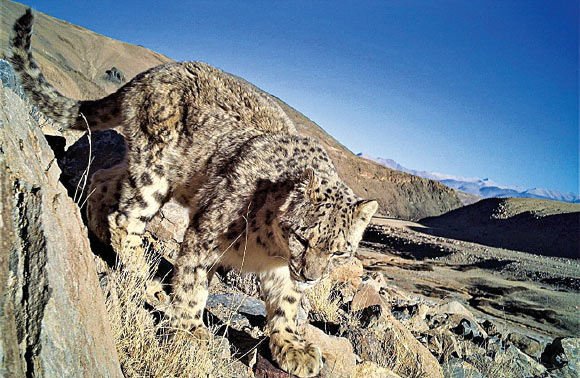Now Reading: Camera Study Finds Robust Snow Leopard Population in India
-
01
Camera Study Finds Robust Snow Leopard Population in India
Camera Study Finds Robust Snow Leopard Population in India

Quick Summary
- A new study conducted by scientists from Union Territory of Ladakh and the Wildlife Institute of india evaluated snow leopard populations across a 59,000 km² area in Ladakh.
- The researchers used a double sampling method including surveys for signs like footprints and feces, alongside 956 camera traps covering over 8,500 km².
- Individual snow leopards were identified through artificial intelligence software analyzing forehead markings from photographs.
- It was estimated that Ladakh hosts around 477 snow leopards (68% of India’s total),with density ranging from 1 to 3 individuals per 100 km². Hemis National Park recorded the highest global density.
- About 61% of these snow leopards coexist with human populations,especially in resource-rich grasslands with moderate climates and complex terrain due to abundant prey and minimal human interference.
- Local communities play a key role in sustaining high densities through their reverence for wildlife, economic reliance on ecotourism, and conflict management strategies like livestock protection incentives.
Indian Opinion Analysis
The findings underscore the critical importance of systematic scientific methodologies in conservation biology, notably for elusive species like the snow leopard that inhabit challenging terrains such as Ladakh’s Trans-Himalayas. The use of advanced technologies like AI-driven pattern recognition showcases an innovative step forward in individual identification and population management accuracy-an approach potentially replicable elsewhere within its range across South and Central Asia.
Ladakh’s success story highlights effective integration between ecological research, local traditions rooted in wildlife respect, sustainable tourism benefits, and conflict mitigation efforts as critical components supporting conservation goals. While Hemis National Park’s unusual density is cause for optimism about protection measures working locally, broader landscape-level strategies will be vital to ensure long-term survival amidst habitat disturbance or climate change pressures.























